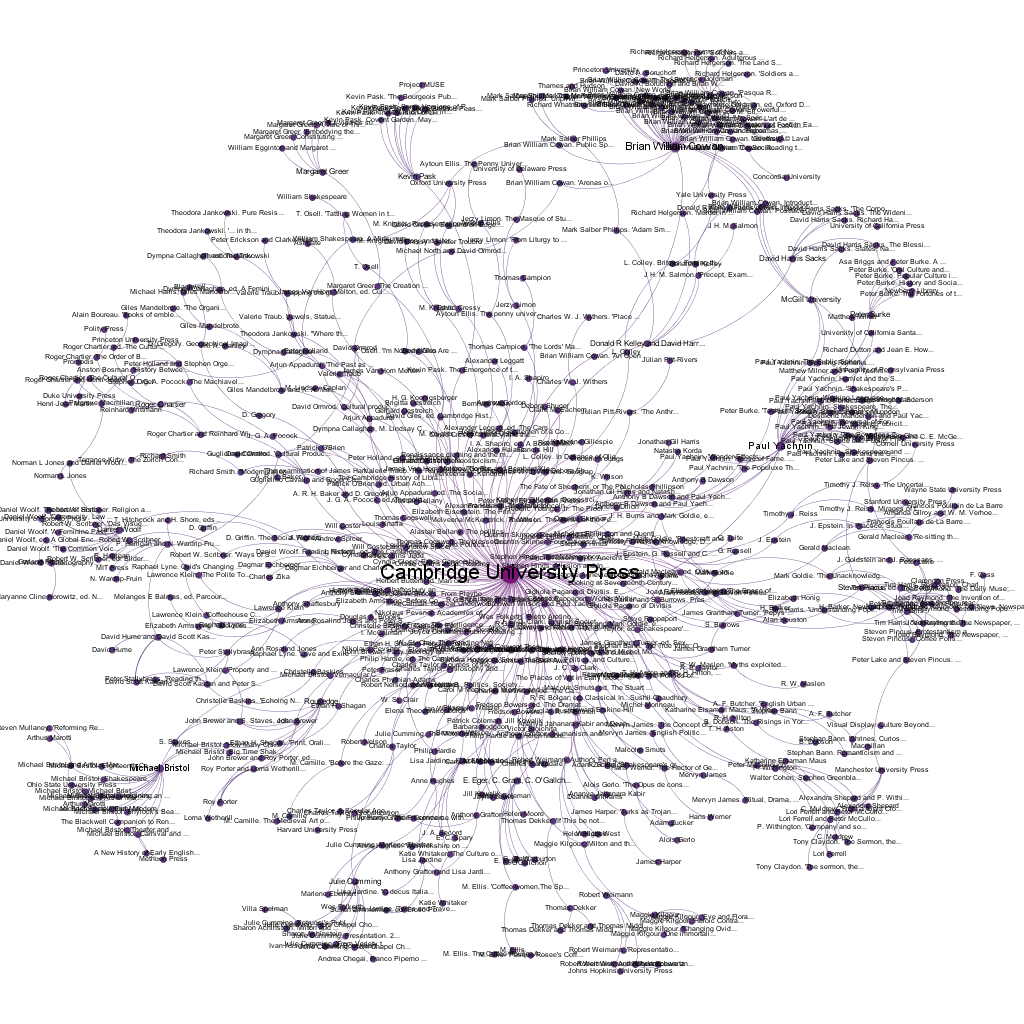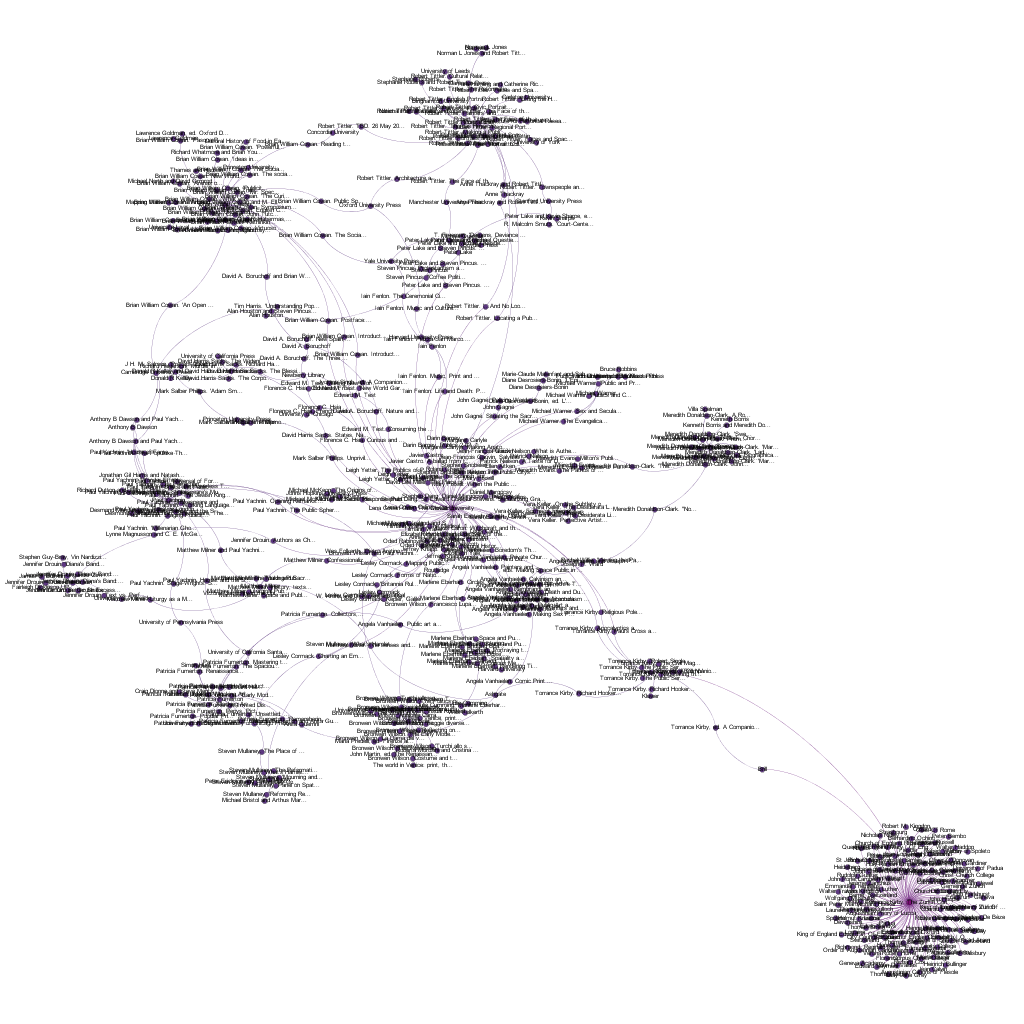Making Publics
http://www.makingpublics.org | http://makingpublics.mcgill.ca
For an archival presentation of the project, see http://project.makingpublics.org
From August 2008 to December 2010 I was the Postdoctoral Fellow in Digital Humanities and Early Modern Studies with the SSHRC Major Collaborative Research Initiative ‘Making Publics’ (MaPs). My main responsibility was the project website, which I inherited from the previous postdoctoral fellow. Upon my arrival it was a static html site of some 200 pages, built around three primary audiences – the general public, project members, and high school students and teachers. Over the course of my fellowship I transformed the website into an interdisciplinary collaborative virtual research environment built around a shared ‘common’ archive of people, places, and things (books, articles, essays, artwork, music etc) related to the topic of publicity and forms of association in early modern Europe. The result was an environment that re-envisaged how a large interdisciplinary and international humanities research project might approach going about its business – essentially building its own vast repository of materials from any number of resources, digitized or analogue. In 2012 I was awarded a $66,000 Public Dissemination Grant from SSHRC to head up a team of four McGill scholars, and 8 students, to redevelop the website as an online open linked data repository using the Research Description Framework (RDF). This work focused heavily on two areas: named entity extraction of interactions within the prose works of MaPs’s scholars, and development of a suitable RDF schema for presenting the data. Although the former proved extremely difficult, and imprecise, the latter saw creation of an innovative approach to modeling social interactions or events, the Networked Event Model (NEM). We are currently writing up the work of the project and revising NEM for wider use in a series of subsequent prosopographical research projects.
The MaPs website has considerable breadth. In many ways it was an experiment to see what reconfiguration of our approach to humanistic data might offer scholars from different disciplines and backgrounds. At its core is a question of mediation: what can an environment, attuned to the basic building blocks of humanistic inquiry (people, places, things, and their interaction over time), do to aid scholars working in a large collaborative project? Computation, in short, allows the often hermetic projects of humanities scholars a certain degree of integration without necessarily disrupting those singular interests. The environment sees collaboration as a gradient from passive and active modes: sharing does not mean the same thing to everyone. It can act as an individual research tool, akin to others like Zotero, but does so within a collaborative architecture that means individual work aggregates to the collaborative whole. In seeking to do the heavy lifting of collating materials for individual researchers, it does what no singe project member can do – sort through the swathes of reading and data that comes with over a decade of collaborative work and discussion.
The core of this is the atomization of humanistic data around agents, locations of production and interaction, and objects: people, places, and things. Rather than creating a bibliography, the MaPs environment sees the citation and bibliographic record as merely one among many kinds of representations of historic interactions. This simple inversion of the primary datum of humanities research allows for the documentation of other types of interactions between the core data type, allowing creation of more complex, and nuanced, tracing of forms of association: MaPs’s primary object inquiry. This distinct structure, and legacy funding and cyber-infrastructure decisions, prevented adoption of community-developed CMSs like Drupal, Joomla, or Wordpress. MaPs utilizes its own content management system which was developed with social coding in mind – it allows for versioning, and building of pages for different audiences. It is a lightweight jQuery HTML front end that sits on a php-mysql backend; it can handle multiple databases and users, including developers who can create new tools based on the collaborative data created by its larger humanistic user community.
Given its breadth, I’m in the process of dividing up the MaPs environment into more discrete projects. The most important of these is Nanohistory. The model powering the tracing of interactions is now NEM, and is in the process of revision for publication as an RDF schema. Other aspects of the environment include an approach to documentation of historical dates capable of ‘fuzzy dating’ and cross-calendrical operability; a recommendation engine based on analysis of user comments, searches, and tagging; and data harvesting from online resources like DBPedia, OCLC’s xISBN, Geonames, VIAF, and other APIs.
The SSHRC RDF Project lead to the creation of MaPs web services – a prototype API allowing access to the project’s data using JSON and RDF. For discussion of the project, please see NEM
Network Viewer
This prototype network viewer uses a D3.js force-direct graph to display JSON data. These public-facing pages are to allow users to embed visualizations in other sites.
- Making Publics example - Paul Yachnin & Jurgen Habermas
http://www.makingpublics.org/tools/visualize/webs/newviewer.php?q=person:1,person:114&d=3&nt=2,4,5,6,3
Preloaded: Making Publics example - Paul Yachnin & Jurgen Habermas
http://www.makingpublics.org/tools/visualize/webs/newviewer.php?data=4 - Networks in Reformation England - People & Organizations in D. MacCulloch, Thomas Cranmer
http://www.makingpublics.org/tools/visualize/webs/newviewer.php?q=thing:2397&d=1&nt=2,4
Preloaded: Networks in Reformation England - People & Organizations in D. MacCulloch, Thomas Cranmer
http://www.makingpublics.org/tools/visualize/webs/newviewer.php?data=5
Preloaded: - Networks in Reformation England - People & Organizations in D. MacCulloch, Thomas Cranmer
http://www.makingpublics.org/tools/visualize/webs/viewer.php?q=thing:2397&d=1&nt=2,4 new
- Networks in Reformation England - People, Organizations, Places, and Things in D. MacCulloch, Thomas Cranmer
http://www.makingpublics.org/tools/visualize/webs/newviewer.php?q=thing:2397&d=1&nt=2,4,5,6 - Networks in Reformation England - [Same] edges limited to 'partOf'
http://www.makingpublics.org/tools/visualize/webs/newviewer.php?q=thing:2397&d=3&nt=2,4,5,6&e=371,369,370 - Networks in Reformation England - [Same] JSON Data
http://www.makingpublics.org/frame/ajax/data/webs.php?q=thing:2397&d=3&nt=2,4,5,6,3&e=371,369,370
























